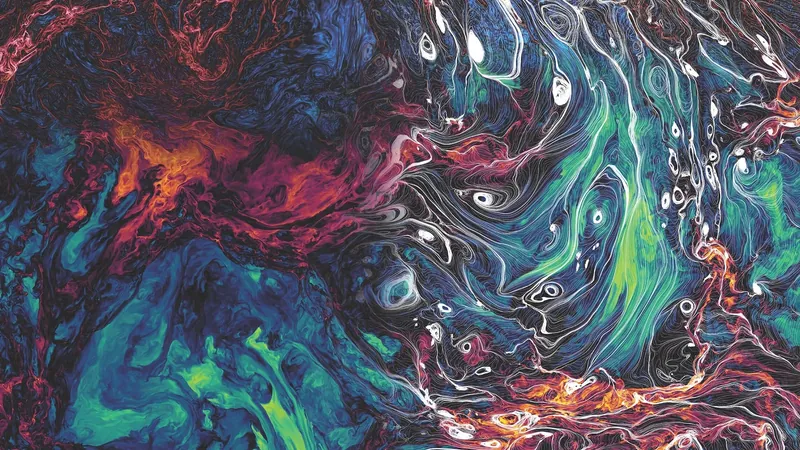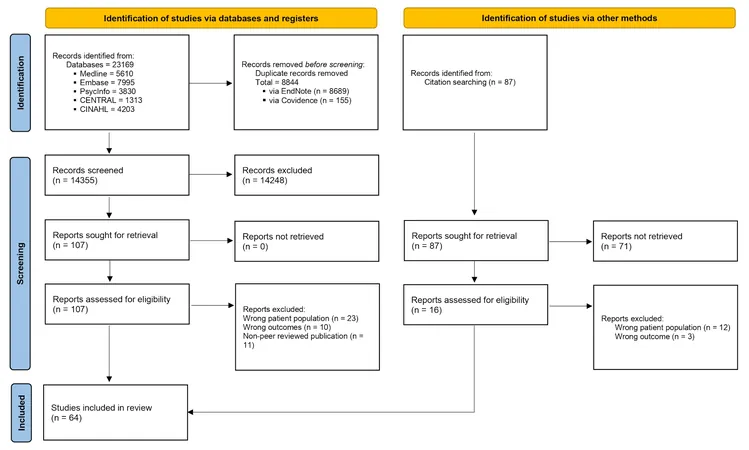
Unveiling the Cosmic Dance: Groundbreaking Supercomputer Simulation Captures Stellar Turbulence
2025-05-22
Author: John Tan
Imagine the chaotic swirl of milk in a cup of coffee — that's turbulence in action! It's a force that influences everything from turbulent flights to ocean currents. Now, scientists have taken a giant leap in understanding the turbulence lurking in the vast interstellar medium — the mysterious clouds of gas and charged particles that exist between stars.
In a groundbreaking study published in *Nature Astronomy*, researcher James Beattie from the University of Toronto and Princeton University revealed how their revolutionary model provides an unprecedented view into these cosmic dynamics. "This is the first time we can study these phenomena at this level of precision and across various scales," Beattie exclaimed.
Harnessing the immense computing power of the SuperMUC-NG supercomputer at Germany's Leibniz Supercomputing Center, the team developed a highly scalable model capable of constructing a cubic framework of up to 10,000 units. This sophisticated structure not only simulates the magnetic fields that influence our galaxy but can also focus on localized turbulence, such as the solar wind — a stream of charged particles darting from the sun.
Even though the charged particles in the interstellar medium are incredibly diffuse, they create a magnetic field that is millions of times weaker than that of a refrigerator magnet. Yet, in the vacuum of space, this seemingly weak field is crucial, acting as a key player in shaping galaxies and aiding star formation.
Unlike previous models, this cutting-edge simulation accounts for how these magnetic fields interact dynamically with interstellar ions, swirling them based on their charge and density. Such insights could be vital for astrophysicists seeking to unravel the mysteries of galaxy formation, including our own.
Looking ahead, Beattie and his team are eager to enhance their models with even higher resolution and align their simulations with real-world data, such as solar wind measurements. The arrival of powerful observatories like the Square Kilometre Array in Australia and South Africa holds promise for making these cosmic simulations even more precise.
As science continues to unveil the enchanting complexities of our universe, this simulation opens new pathways to understanding the fundamental forces at work in the cosmos. Don’t miss out on the universe's hidden dance — it’s more mesmerizing than ever!




 Brasil (PT)
Brasil (PT)
 Canada (EN)
Canada (EN)
 Chile (ES)
Chile (ES)
 Česko (CS)
Česko (CS)
 대한민국 (KO)
대한민국 (KO)
 España (ES)
España (ES)
 France (FR)
France (FR)
 Hong Kong (EN)
Hong Kong (EN)
 Italia (IT)
Italia (IT)
 日本 (JA)
日本 (JA)
 Magyarország (HU)
Magyarország (HU)
 Norge (NO)
Norge (NO)
 Polska (PL)
Polska (PL)
 Schweiz (DE)
Schweiz (DE)
 Singapore (EN)
Singapore (EN)
 Sverige (SV)
Sverige (SV)
 Suomi (FI)
Suomi (FI)
 Türkiye (TR)
Türkiye (TR)
 الإمارات العربية المتحدة (AR)
الإمارات العربية المتحدة (AR)